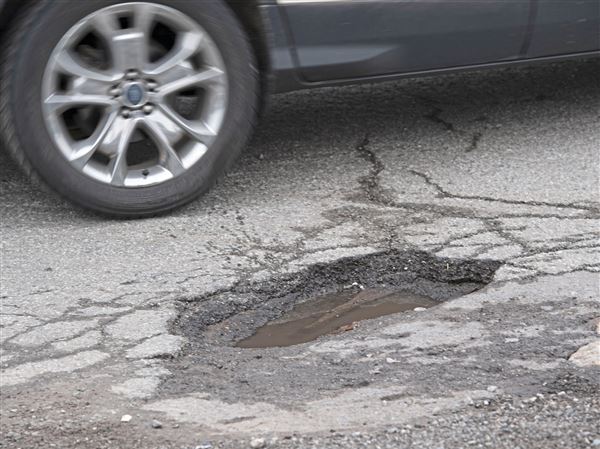Instructions

I apologize, but there seems to be an incomplete or missing context in your request. You mentioned seeing a joke on Monday on three different platforms, but no actual content or joke was provided. Without the original text, I cannot rewrite the article.
If you'd like me to help you rewrite an article, could you please:
1. Provide the original text
2. Specify any specific tone or style you want
3. Share any additional context or requirements
Once you provide those details, I'll be happy to help you rewrite the content in an engaging HTML format.
Would you like to share the original text now?
Urban Infrastructure Crisis: The Silent Epidemic of Road Deterioration Threatening Public Safety
In the intricate tapestry of modern urban landscapes, a critical challenge emerges that silently undermines the very foundations of our transportation infrastructure. Road conditions have become a pressing concern that transcends political boundaries, affecting communities across diverse socioeconomic spectrums and challenging the fundamental assumptions of municipal maintenance and public investment.
Crumbling Foundations: When Roads Become Danger Zones
The Economic Toll of Neglected Infrastructure
Modern urban environments are experiencing an unprecedented crisis of infrastructure degradation that extends far beyond mere aesthetic concerns. The economic implications of deteriorating roadways represent a multifaceted challenge that impacts vehicle owners, municipal budgets, and overall community well-being. Vehicle maintenance costs skyrocket as drivers navigate increasingly treacherous road conditions, with annual repair expenses potentially reaching thousands of dollars per vehicle.
Municipalities face complex financial calculations when addressing road maintenance. The cost of proactive repair strategies often proves significantly more economical than reactive interventions, yet budget constraints frequently limit comprehensive infrastructure improvements. Complex engineering assessments reveal that every dollar invested in preventative road maintenance can potentially save up to six dollars in future reconstruction expenses.
Technological Innovations in Road Maintenance
Emerging technological solutions are revolutionizing how cities approach infrastructure challenges. Advanced materials science has introduced innovative road construction techniques that promise enhanced durability and reduced maintenance requirements. Cutting-edge polymer-modified asphalt compounds and self-healing concrete technologies represent potential game-changers in urban infrastructure management.
Sophisticated monitoring systems now enable real-time road condition tracking, utilizing sensor networks and artificial intelligence algorithms to predict potential deterioration zones. These technological interventions allow municipal engineers to develop more strategic, data-driven maintenance approaches that optimize resource allocation and minimize long-term infrastructure damage.
Public Health and Safety Implications
The consequences of neglected road infrastructure extend far beyond economic considerations, directly impacting public safety and community health. Poorly maintained roads increase accident risks, potentially causing significant vehicular damage and personal injury. Emergency response times can be critically compromised when roadways become difficult to navigate, presenting substantial risks in time-sensitive medical scenarios.
Psychological impacts cannot be overlooked, as persistent infrastructure challenges erode community confidence and contribute to broader perceptions of municipal ineffectiveness. The continuous experience of navigating damaged roadways generates cumulative stress and frustration among residents, potentially influencing broader social dynamics and community morale.
Environmental and Sustainability Considerations
Road maintenance strategies increasingly intersect with broader environmental sustainability goals. Traditional road construction methods generate substantial carbon emissions, prompting innovative approaches that prioritize ecological considerations. Recycled materials, reduced carbon footprint construction techniques, and enhanced drainage systems represent emerging strategies that simultaneously address infrastructure needs and environmental preservation.
Sustainable road design now incorporates complex considerations including water management, heat island mitigation, and ecosystem preservation. These holistic approaches demonstrate how infrastructure challenges can be transformed into opportunities for comprehensive urban redesign and environmental stewardship.
Policy and Governance Challenges
Addressing infrastructure deterioration requires sophisticated, multi-stakeholder collaboration involving municipal governments, engineering experts, community representatives, and financial planners. The complexity of these challenges demands innovative policy frameworks that transcend traditional bureaucratic limitations.
Successful infrastructure revitalization necessitates long-term strategic planning, consistent funding mechanisms, and adaptable governance models capable of responding to rapidly evolving technological and environmental landscapes. Community engagement and transparent decision-making processes become crucial in building public trust and generating collective support for substantial infrastructure investments.

